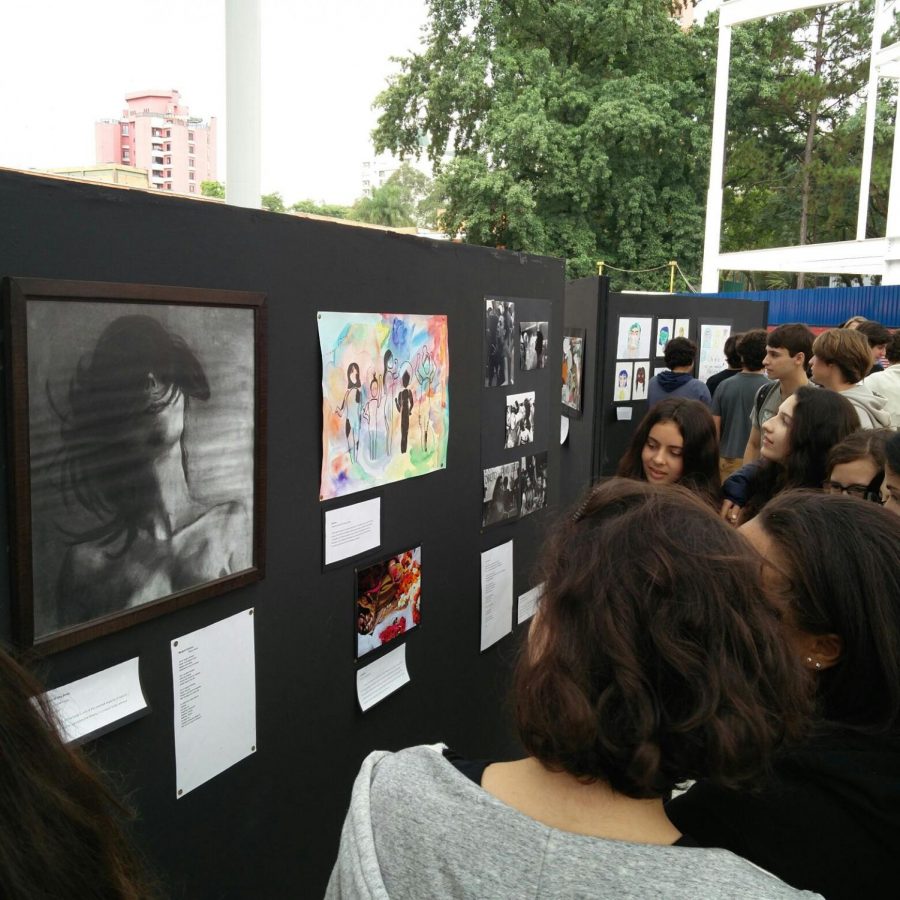A Controversial Celebration
International Women’s Day (IWD) is celebrated on March 8th every year. The day is considered to be a focal point in the women’s rights movement and is usually accompanied by various marches, events, protests and, in Graded’s case this year, an art exhibition.
Women’s Day was first observed on February 28th, 1909 in New York; the celebration was organized by the Socialist Party of America and was adopted the next year by the International Socialist Women’s Conference. 56 years later, in 1975, the United Nations celebrated International Women’s Day for the first time. Two years later, in 1977, the United Nations General Assembly called for all member states to establish March 8th as Women’s Day.
In celebration of International Women’s Day, Graded’s Femolution Club, together with Women of Graded, organized an art exhibition in the student center. However, the event soon became controversial with the removal of one art piece from the collection and the cancellation of a poem recitation during high school community time. The art piece depicted a bloody tampon and an assault rifle side-by-side. Below the two images was the statement: “One of these is stigmatized and it’s not the one that kills”. The following article seeks to provide an account for the case made by the teachers and members of the administration involved in the IWD art exhibition at Graded.
As put by Ms.Couture-Latour, one of the teachers involved in the exhibition, the event’s purpose was to “give the entire school community an opportunity to partake in [the celebration of Women’s Day].” Mrs. Cope, the High School Vice-Principal, also stated, in regards to the exhibition’s purpose, “the art exhibition was an opportunity to celebrate the diversity of women. ….We hoped to be able to showcase the many facets of what makes up women at Graded and in the world.” As a member of Women of Graded, Ms. York, IB art teacher, wanted to become more involved and offered to help with the exhibition. In the end, she provided support by collecting the different pieces before they were set up in the student center and helping to orchestrate the show’s hanging.
In her interview with The Talon, Ms. York explained the process behind the Call for Work for the exhibition. She stated that there was no work criteria or “consideration for the [exhibition’s] venue” included in the call. After the work was collected in one place and properly looked at, it became clear that “somebody had to step in and make choices. [The selection of pieces] was a process that happened after the collection, when it should have happened prior to the call for work.” To address student claims alleging censorship, Ms. York said that “people just weren’t aware” of what they should include in the call for work, or “what kind of limitations the venue presented. When you have to make decisions after the fact it looks suspiciously like censorship, but I don’t think that’s what it was.” Ms. York also revealed that she was not involved in the process of selecting the work. She explained that her role was merely “to let the administration know about the range of imagery in the works, because the venue is the school’s public entrance.”
The selection process culminated in the removal of one painting from the exhibition and the cancellation of the recitation of a poem to the high school during community time. The reasoning behind the painting’s removal, as put by Ms. Couture-Latour, was that “the venue that we had chosen meant that we had to only include work that was appropriate for the viewing audience.” Mrs. Cope adds on to Mrs. Couture-Latour’s explanation by stating: “In the end, I was the one who asked for one art piece to not be shown in public. We remain a school for over 1000 students, as well as a large number of visitors, and I did not consider that piece of art [the painting] was appropriate for the wider audience that may have seen it. It was a shame to have to pull it from the display, but I felt that it was something that was better for a different venue.”
Mrs. Couture-Latour did note the apparent irony in removing the painting, as the artist’s “whole point was that this is something taboo. However,” she noted, “when you have small children walking through the exhibition, for it to be a meaningful experience, there has to be a conversation about the art. The fact that it was just being displayed doesn’t guarantee that there will be any conversation about it, or give context to what is going on. […] That can be quite an alarming and counter-productive experience.”
All three of the teachers and administrators involved in the organization of the art exhibition, however, stressed that the painting was not removed and recitation was not cancelled “because they weren’t important pieces of art or carried important messages,” Mrs. Couture-Latour explained, “but because they were just not appropriate for the venue, and that was the problem.”
Sources: United Nations

Ever since he first “read” a book by himself (or at least phonetically memorized the contents after having it read aloud repeatedly), Alexandre has...











